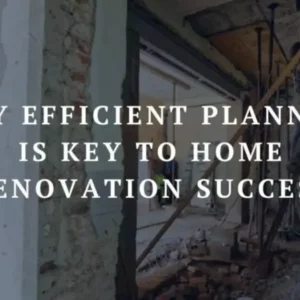Renovating a bathroom is an exciting opportunity to create a more functional, stylish, and comfortable space in your home. Whether it’s a complete transformation or a simple update, proper planning is the key to achieving a successful outcome. Many homeowners dive into projects without a clear strategy, which often leads to delays, stress, and unexpected compromises. By approaching bathroom renovations with a well-structured plan, you can ensure every detail is carefully thought out and executed with confidence.
Assess Your Current Bathroom
Before making any decisions, take the time to evaluate your existing bathroom. Think about what works well and what doesn’t. This assessment will help you identify priorities and highlight areas that require change. Ask yourself:
- Is the layout practical for daily use?
- Are there enough storage options?
- Does the lighting suit the space?
- Are there any plumbing or ventilation issues?
By answering these questions, you’ll gain a clearer understanding of what improvements are necessary and how to align them with your vision.
Define Your Goals and Style
Once you’ve assessed your bathroom, it’s time to define your goals. Some homeowners may focus on creating a luxurious retreat, while others prioritise functionality and durability. Establishing your objectives early will guide the rest of your planning process.
It’s also essential to choose a style that reflects your preferences and complements the overall look of your home. Whether you prefer a sleek modern design, a timeless classic feel, or a minimalist aesthetic, having a clear direction ensures consistency in your material and colour selections. A clear style vision will also make it easier to shortlist fixtures and finishes without feeling overwhelmed by too many choices.
Plan the Layout Carefully
The layout is the backbone of a successful renovation. Consider how fixtures such as the shower, vanity, toilet, and bathtub are positioned in relation to one another. A well-planned layout should:
- Maximise available space.
- Ensure smooth movement between areas.
- Take into account natural light and ventilation.
- Make plumbing and electrical connections efficient.
Sketching or visualising the layout can help you identify potential issues before work begins and give you confidence that the space will flow well once completed.
Choose Materials and Finishes Wisely
The materials and finishes you select play a significant role in both the appearance and longevity of your bathroom. Look for options that strike a balance between style and practicality. Popular choices include tiles that are durable and easy to clean, benchtops resistant to moisture, and fixtures that complement your design theme.
When selecting finishes, keep in mind factors such as:
- Slip resistance for flooring.
- Moisture resistance for cabinetry.
- Ease of maintenance.
- Colours and textures that enhance the overall design.
Quality materials not only elevate the look of your bathroom but also ensure it withstands daily use over time.
Focus on Lighting and Ventilation
Lighting and ventilation are often overlooked, but they are critical to functionality and comfort. Adequate lighting should include a combination of task lighting for grooming, ambient lighting for overall brightness, and accent lighting to create atmosphere.
Ventilation is equally important, as it prevents mould growth and maintains air quality. Consider natural ventilation through windows, supported by a reliable exhaust system for consistent airflow.
Storage and Practical Details
Well-designed storage makes a bathroom far more functional. Incorporating vanities with drawers, mirrored cabinets, and shelving can help reduce clutter and maintain a tidy space. Don’t forget small but essential details, such as towel rails, hooks, and niches for toiletries, as these add convenience and enhance usability.
Including hidden storage or space-saving solutions can also maximise functionality, especially in smaller bathrooms where every inch counts.
Allow Time for Planning
Rushing into a renovation without proper preparation often leads to avoidable problems. Take time to research, create mood boards, and consult with experts if needed. A thoughtful plan not only reduces stress but also ensures the result matches your expectations.
It can also be helpful to plan your renovation timeline in stages. For example, you may want to complete the demolition and plumbing work before selecting the final tiles or fittings. Breaking the project into phases provides flexibility and helps you adjust if unexpected challenges arise. Additionally, setting aside time to explore design inspiration—through magazines, online platforms, or showrooms—can give you fresh ideas and confidence in your choices.
Another often-overlooked aspect is future-proofing. Consider how your household might evolve over time and whether your bathroom should adjust to meet those changing needs. Features such as easy-to-reach storage, walk-in showers, or energy-efficient fittings can make your bathroom more versatile and sustainable in the long run.
Final Summary
Planning an effective renovation involves striking a balance between functionality, style, and practicality. From assessing your current bathroom and setting clear goals to carefully considering layout, materials, and lighting, every step contributes to the success of your project. With thoughtful preparation and attention to detail, your vision can be turned into a space that is both practical and beautiful. By approaching bathroom renovations with a clear plan, you’ll enjoy a smoother process and a result that enhances both your home and lifestyle.





